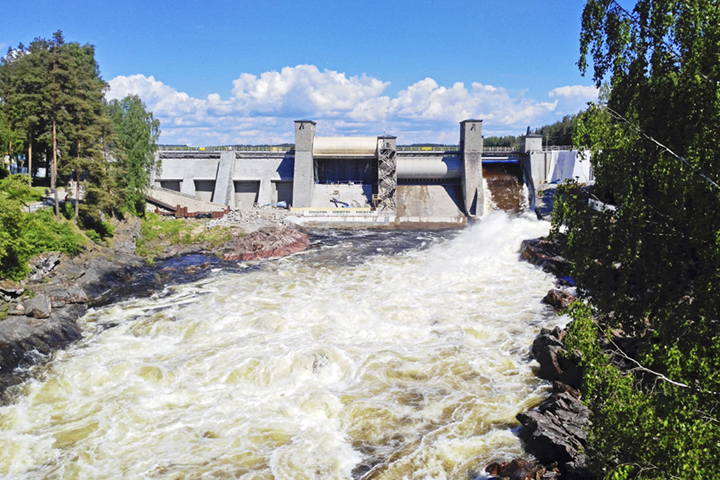HOW IS HYDROPOWER USED AS A RESERVE?
Hydropower is used as Frequency Containment Reserve (FCR) and Automatic Frequency Restoration Reserve (aFRR) and on the balancing energy market (mFRR). Reserves that require automation activate in a few minutes. The balancing energy market is a manual reserve that has an activation period of 15 minutes from the time of order.
Hydropower is cost-effective and it accounts for a large share of the balancing energy market. It is used for more than 90% of lower balancing and accounts for approximately 50% of the activated bids in upward balancing. It also makes up a significant share of automatic products.
WHY IS HYDROPOWER A GOOD RESERVE?
Hydropower can be regulated simply and quickly. The reservoirs near hydropower plants function as storages. Water is collected in them during, for example, the spring and summer when water flow is high and electricity consumption is low.
This storage is used when electricity consumption is high. As a result, the amount of electrical energy produced with hydropower can be rapidly increased or reduced. Regulation can be carried out at any time. The only time that rivers have to flow at full force through the power plant is during floods, which means there is less regulation capability in that situation.
HOW DOES HYDROPOWER WORK ON THE BALANCING ENERGY MARKET?
When manual regulation is ordered, the possibility for fast activation is a great advantage for hydropower bids. Following a major disturbance, such as a cross-border transmission line fault or disconnection of a large power plant from the grid, activation of hydropower can provide a large amount of power very quickly.
Especially in unpredictable cases, the opportunity for fast activation – either up or down according to the situation – facilitates the work of Fingrid’s Control Room operator and helps maintain the power balance. Here in the Control Room, we notice the flexibility of hydropower even in normal situations, says Balancing Expert Paavo Pietilä.







